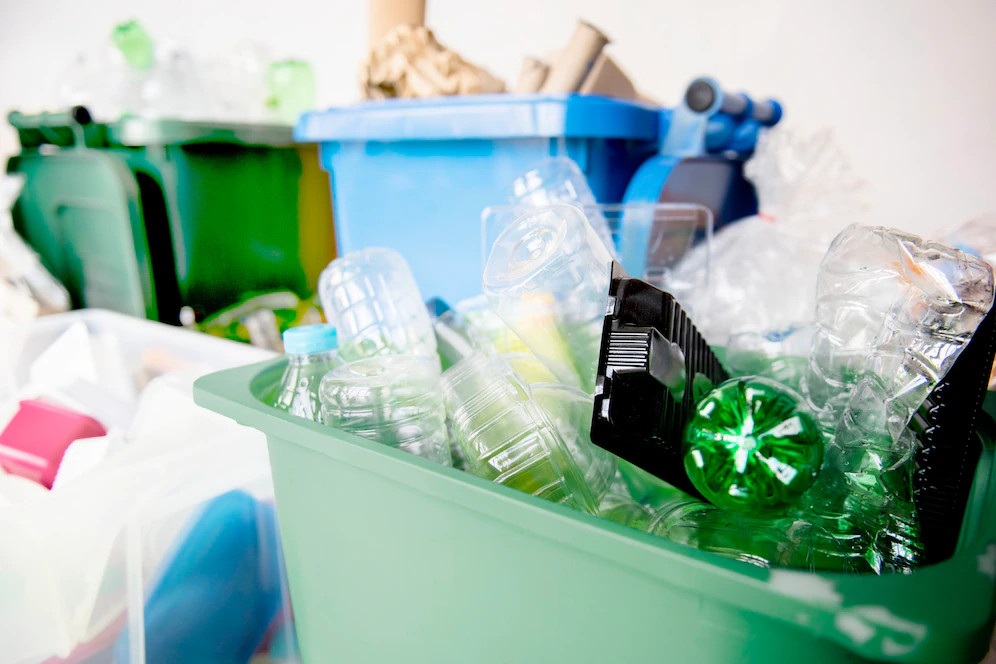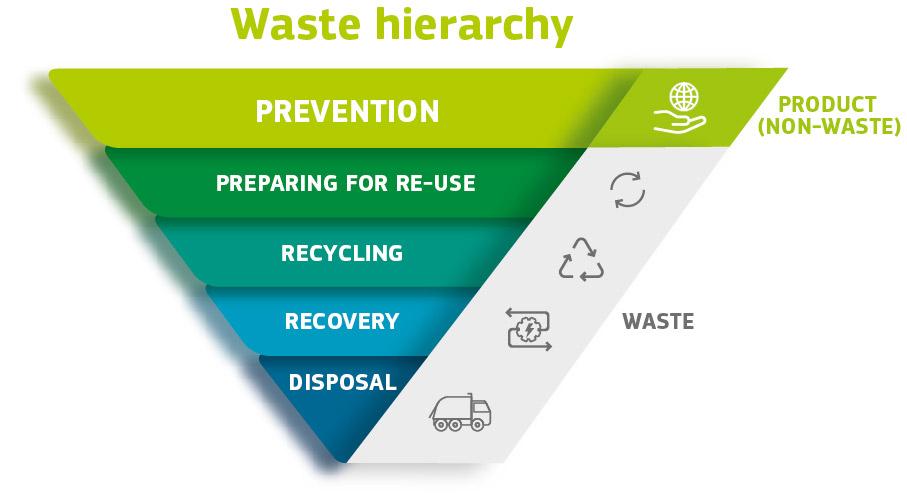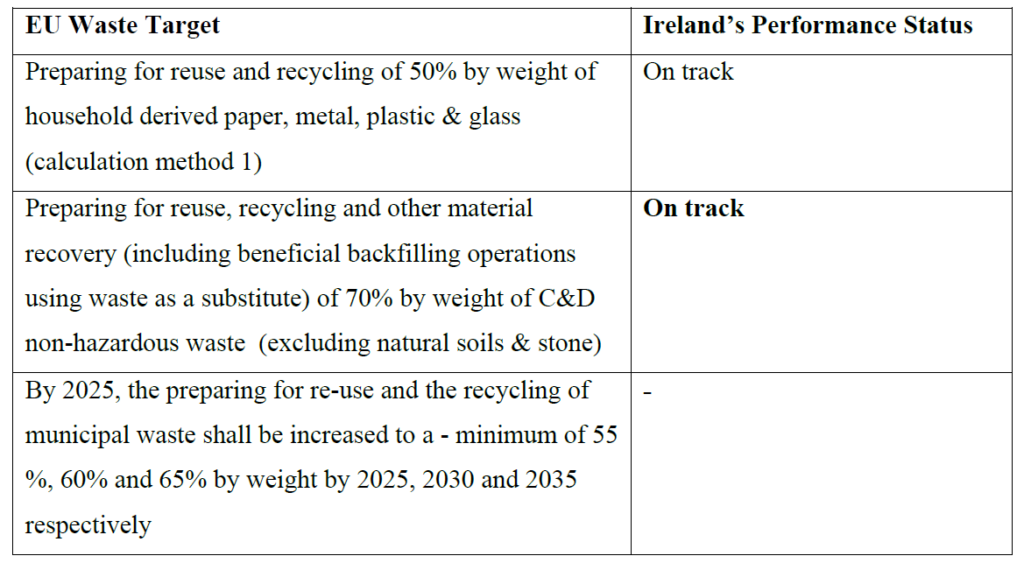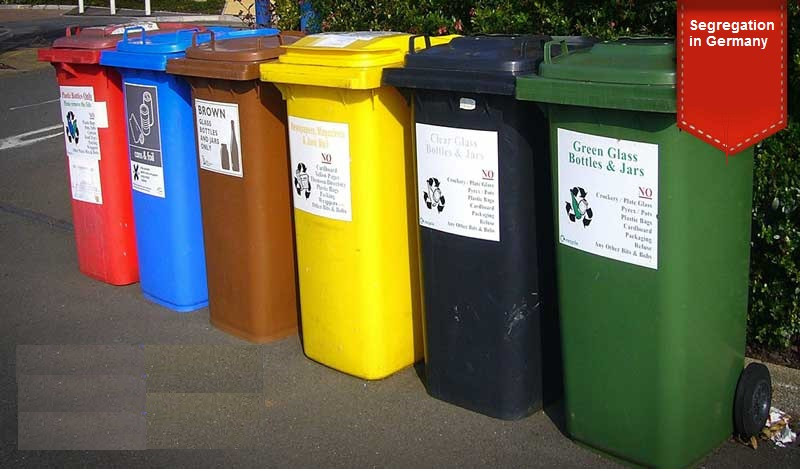
Article by ZWAI member Nazia Naheed Husain.
What is the EU Waste Framework Directive? A quick glance
The EU Waste Framework Directive (EU WFD) 2008/98/EC of the European Parliament and of the Council was adopted on 19 November 2008 to enable European Union (EU) Member States to manage, recycle and reduce their waste. The Directive, as represented in Figure 1, charts a Five-Step “Waste Hierarchy” system for the better management and disposal of waste which follows, prevention → preparing for reuse → recycling → recovery → disposal. The adoption of this Directive enforces EU Countries to design their individual waste management systems in a manner that supports prevention over disposal of waste and recycling over recovery for energy.

The Directive also sets forth certain targets for member countries to achieve. However, it is left on the Member States to design and implement commensurate mechanisms and policy actions that would help them achieve these targets at the national level.
Assessing Ireland’s Performance under the EU WFD
Much of the provisions of the EU WFD were already enshrined in Irish national primary legislation by the 1996 Waste Management Act and associated Regulations. The table below provides an overview of Ireland’s performance against each target set by the EU WFD.

Municipal Waste: A concern in Ireland
While Ireland remains on track to meet the aforementioned EU waste targets, municipal waste emerges as a particular concern in the country. Municipal waste is characterised as the waste produced in households and similar waste produced by businesses. While Ireland narrowly met the 2020 recycling target for municipal waste (50%), under the revised EU WFD, this target is set to increase by 5 percentage points every five years until it reaches 65% in 2035. The calculation method for 2025 and beyond is also significantly more stringent which will make achieving the higher targets even more challenging for Ireland (Environmental Protection Agency, 2020).
Quick figures: Where does Ireland stand?
- Over 2.9 million tonnes of municipal waste was generated in Ireland in 2018, of which 53% came from households and 47% from commercial sources. This amounted to 600 kg of municipal waste per person in Ireland which was an increase from 577 kg per person in 2017. The Environment Protection Agency (EPA) linked this waste to high consumption levels as well as Ireland’s rampant ‘single-use and throwaway culture’.
- Of the 2.9 million tonnes of municipal waste generated, 38% was recycled, 43% was used in energy recovery and 14% was landfilled. Energy recovery is undoubtedly a preferable waste management option for disposal as per the waste hierarchy, however it disincentivises the maximum extraction of recyclables from residual waste (Morris, 1996) as can be observed in Ireland’s recycling figures stated below.
Challenges with Ireland’s Municipal Waste Recycling
What is of major concern is that recycling in Ireland has largely plateaued since 2010 with falling rates, after achieving significant strides in the early 2000s. Data from Eurostat reveals that Ireland has the highest plastic waste generation, far higher than the EU average. However, Ireland is the fourth lowest in the EU when it comes to recycling. Ireland’s 2018 municipal waste recycling rate of 28% was in fact down from 40% the previous year, as per EPA’s preferred calculation approach based on the OECD-Eurostat sustainable development indicator on municipal waste. This puts Ireland’s recycling rate below the European average of 47% and significantly behind the leading EU country, Germany, where 67% of municipal waste was recycled in 2018 (Environmental Protection Agency, 2020). Ireland’s new Waste Action Plan for a Circular Economy 2020-2025 builds on the concept of a ‘zero-waste future’. However, this Plan could be further strengthened to encourage the reduction of waste while enforcing a more robust recycling plan for better waste management practices.
What can Ireland learn from Germany about improving its recycling?
Germany’s recycling rate success is attributed to its extensive public engagement and willingness to reduce consumption, supported by a strong waste segregation and recycling infrastructure. Let’s take a look at some of Germany’s best practices in waste management to understand if its implementation in Ireland would allow the country to meets its own waste targets successfully.
1. More coloured recycling bins
The fact that Germany uses six differently coloured bins means that there is immense clarity about the waste type that goes into each bin. Yellow is for plastics, blue for paper and cardboard, white for clear glass, brown for coloured glass, green for green glass and a sixth bin for food waste and organic matter. Ireland uses only three coloured bins – green for recycling, black for residual and brown for organic waste. Presently, these impose overlaps in the type of waste that goes in each with lack of clarity about hazardous waste such as batteries and electronic equipment disposal and commensurate recycling options for them. With more correctly labelled recycling bins available, care will be taken by the public to separate waste carefully and appropriately. Current EPA figures indicate that 20% of the material in household recycling bins does not belong there whereas 70% of waste in general bins should be in recycling or organic (Agency, 2022). The use of more specific bins will maximise the recycling potential of the waste while eliminating the risk of contamination of recyclable items.

2. Education drives
To kickstart a strong recycling and waste management programme, Germany conducts extensive awareness drives. Often people, especially overseas students and employees who are new to the country are unaware of the host country’s recycling practices. Lack of understanding of a recycling programme can negatively affect the recycling participation rate, as well as the quality of waste presented (Purcell and Magette, 2010). It is important that educational institutions and workplaces conduct recycling educational drives every six months to inform new members about Ireland’s waste separation practices such as correctly separating recyclable from non-recyclable items. These drives will intrinsically improve waste separation practices for the entire community.
3. Treating waste as a resource
Germany relies on an increasingly ‘circular economy’ approach towards its waste management practices (Nelles et al., 2016). Under its German Closed Cycle Management Act, it aims to turn waste management into a resource management, in fact, 14 per cent of the raw materials used by German industry are recovered waste. For Ireland to adopt this model would imply complete circularity of its waste by ensuring that measures support sustainable economic models where the use of recycled materials is encouraged over virgin materials. This would also prevent the loss of resource value, which at present is an unnecessary cost currently borne by households and businesses due to their poor waste separation practices. This will also enable Ireland to push for innovative raw materials processing technology.
4. Targeted monitoring
For recycling targets to be achieved, it is important that non-recyclers in Ireland are tracked down and a fine imposed on them for non-compliance. Illegal garbage dumping or burning needs to be made liable to prosecution. In Germany, information collected from the local waste collectors is used to identify defaulters and a fine up to 2,500 EUR is issued. A similar structure could be test-driven in Ireland to assess if people were sensitised about the importance of correct recycling with such an imposition for defaulters.
5. Incentivising recycling for behavioural change
Germany uses its public spaces to advertise the benefits of recycling. It also incentivises recycling by issuing rewards such as discounts on waste collector fees for good performers. A similar model could be implemented in Ireland where recycling messages and awareness drives led by local community leaders could be tailored to suit specific communities. Those who perform better would be issued virtual tokens that discount the waste collector’s fees. Small but effective and sustained incentives such as these could progressively change Ireland’s recycling behaviour (Gibovic and Bikfalvi, 2021).
What’s next for Ireland and its waste recycling efforts?
Ireland’s strides in recycling rates in the early 2000s can be replicated and improved through a robust waste action plan where emphasis is laid on community participation and public awareness. Nudging people to change their behaviour through incentives and penalties could dramatically alter their attitude towards recycling thereby ensuring that Ireland meets the EU Waste Targets of 2025, 2030 and 2035.
Nazia is currently pursuing MSc Environmental Policy from University College Dublin and is committed to the goal of making sustainability and green living a globally shared endeavour. She supports upcycling initiatives and is an advocate for ‘reduction’ over ‘recycling’ and ‘reuse’. She intends to contribute to effective environmental policy making as a career goal. You can find her on LinkedIn.
References
- Environmental Protection Agency, (2022). Household Waste Statistics for Ireland.
- Environmental Protection Agency, (2020). National Waste Statistics Summary Report for 2018.
- Gibovic, D. and Bikfalvi, A. (2021). Incentives for Plastic Recycling: How to Engage Citizens in Active Collection. Empirical Evidence from Spain. Recycling, 6, 29.
- Morris, J. (1996). Recycling versus incineration: an energy conservation analysis. Journal of Hazardous Materials, 47, 277-293.
- Purcell, M. and Magette, W. L. (2010). Attitudes and behaviour towards waste management in the Dublin, Ireland region. Waste Management, 30, 1997-2006.
- Nelles, M., Gruenes, J. and Morscheck, G. (2016). Waste management in Germany– development to a sustainable circular economy? Procedia Environmental Sciences, 35, 6-14.
